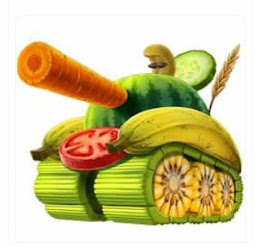 |
| Various Pearls |
General Category Mineral
Formula
(repeating unit) CaCO3
(repeating unit) CaCO3
Identification
- Color white, pink, silver, cream, brown, green, blue, black, and yellow
- Specific gravity 2.60–2.85
A pearl is a hard object produced within the soft tissue (specifically the mantle) of a living shelled mollusc. Just like the shell of a clam, a pearl is composed of calcium carbonate in minute crystalline form, which has been deposited in concentric layers. The ideal pearl is perfectly round and smooth, but many other shapes (baroque pearls) occur. The finest quality natural pearls have been highly valued as gemstones and objects of beauty for many centuries. Because of this, pearl has become a metaphor for something rare, fine, admirable and valuable.
The most valuable pearls occur spontaneously in the wild, but are extremely rare. These wild pearls are referred to as natural pearls. Cultured or farmed pearls from pearl oysters and freshwater mussels make up the majority of those currently sold. Imitation pearls are also widely sold in inexpensive jewelry, but the quality of their iridescence is usually very poor and is easily distinguished from that of genuine pearls. Pearls have been harvested and cultivated primarily for use in jewelry, but in the past were also used to adorn clothing. They have also been crushed and used in cosmetics, medicines and paint formulations.
Whether wild or cultured, gem-quality pearls are almost always nacreous and iridescent, like the interior of the shell that produces them. However, almost all species of shelled mollusks are capable of producing pearls (technically "calcareous concretions") of lesser shine or less spherical shape. Although these may also be legitimately referred to as "pearls" by gemological labs and also under U.S. Federal Trade Commission rules, and are formed in the same way, most of them have no value except as curiosities.
Religious references
Hindu scriptures
The Hindu tradition describes the sacred Nine Pearls which were first documented in the Garuda Purana, one of the books of the Hindu mythology. Ayurveda contains references to pearl powder as a stimulant of digestion and to treat mental ailments. According to Marco Polo, the kings of Malabar wore a necklace of 104 rubies and pearls which was given from one generation of kings to the next. The reason was that every king had to say 104 prayers every morning and every evening. At least until the beginning of the 20th century it was a Hindu custom to present a completely new, undrilled pearl and pierce it during the wedding ceremony.
The Pearl or Mukta in Sanskrit is also associated with many Hindu deities, the most famous being the Koustubha that Lord Vishnu wears on his chest. Apart from religious connotations, stories and folklore abound of pearls occurring in snakes, the Naga Mani, and elephants, the Gaja Mukta.
Hebrew scriptures
According to Rabbenu Bachya, the word Yahalom in the verse Exodus 28:18 means "pearl" and was the stone on the Hoshen representing the tribe of Zebulun. This is generally disputed among scholars, particularly since the word in question in most manuscripts is actually Yasepheh – the word from which jasper derives; scholars think that refers to green jasper (the rarest and most prized form in early times) rather than red jasper (the most common form). Yahalom is usually translated by the Septuagint as an "onyx", but sometimes as "beryl" or as "jasper"; onyx only started being mined after the Septuagint was written, so the Septuagint's term "onyx" probably does not mean onyx – onyx is originally an Assyrian word meaning ring, and so could refer to anything used for making rings. Yahalom is similar to a Hebrew word meaning hit hard, so some people[who?] think that it means diamond. The variation in possibilities of meaning for this sixth stone in the Hoshen is reflected in different translations of the Bible – the King James Version translates the sixth stone as diamond, the New International Version translates it as emerald, and the Vulgate translates it as jaspis – meaning jasper. There is a wide range of views among traditional sources about which tribe the stone refers to.
New Testament scriptures
Religious pendant showing Christ blessing, framed with rubies and pearls, from the Byzantine empire, 12th or 13th century
In a Christian New Testament parable (Matthew 13:45–46), Jesus compared the Kingdom of Heaven to a "pearl of great price". "Again, the kingdom of heaven is like unto a merchant man, seeking goodly (fine) pearls: Who, when he had found one pearl of great price, went and sold all that he had, and bought it."
The twelve gates of the New Jerusalem are reportedly each made of a single pearl in Revelation 21:21, that is, the Pearly Gates. "And the twelve gates were twelve pearls; every gate was of one pearl: and the streets of the city were pure gold, as if transparent glass."
Holy things are compared to pearls in Matthew 7:6: "Do not give dogs what is holy, and do not throw your pearls before pigs, lest they trample them underfoot and turn to attack you."
Pearls are also found in numerous references showing the wickedness and pride of a people, as in Revelation 18:16. "And saying, Alas, alas, that great city, that was clothed in fine linen, in purple and scarlet, and decked with gold, and precious stones, and pearls!"
Islamic scriptures
The Qur'an often mentions that dwellers of paradise will be adorned with pearls:
22:23 God will admit those who believe and work righteous deeds, to Gardens beneath which rivers flow: they shall be adorned therein with bracelets of gold and pearls; and their garments there will be of silk.
35:33 Gardens of Eternity will they enter: therein will they be adorned with bracelets of gold and pearls; and their garments there will be of silk.
52:24 Round about them will serve, [devoted] to them, youths [handsome] as pearls well-guarded.





.jpeg)
0 Comments